Although I’m still waiting on some 1099 forms (*cough* TD Ameritrade), I’ve already got most of my paperwork in order for my tax returns. I plan on comparing the three major tax preparation websites again this year: TurboTax, H&R Block, and TaxACT. I like shopping around as with all of these services, you only pay when you file. First up is Intuit TurboTax, the more popular online version.
Tax Situation
Here’s a quick summary of our personal tax situation.
- Married filing jointly, subject to state income tax
- Both with W-2 income, as well as some simple 1099-MISC forms.
- Interest income and dividend income from bank accounts, stocks, and bonds (Schedule B).
- Contribute to retirement accounts (401ks and IRAs).
- Capital gains and losses from brokerage accounts (Schedule D).
- Itemized deductions (Schedule A), including property taxes and charitable giving.
Price
TurboTax comes in Free, Deluxe, Premier, and Home & Business tiers. Due to my stock sales, I am going with TurboTax Premier Online. Although their website shows a “retail” price of $79.99, anyone who visits the site will automatically see a discounted price of $54.99 for Federal including e-File. TurboTax State Online an optional add-on at $36.99 including e-file. There are additional discounts out there available through various financial firms like Vanguard or Fidelity.
This year, TurboTax also has a Free Edition where you can get $0 Fed + $0 State for simple tax returns only. You must file Form 1040A or 1040EZ – that means taxable income of $100,000 or less, no itemized deductions, no investment income, no stock sales. I remember those days… my entire tax return fit on a single sheet of paper.
Note: I was able to enter the data from 1099-MISC forms without having to upgrade to Home & Business, even though this could be technically called “self-employment income”. I’m pretty sure if you don’t enter any business expenses and/or deductions then you won’t have to make the upgrade.
User Interface and User Experience
The 2014 user interface is probably the cleanest one I’ve seen from Intuit. It feels like I could fill it out on an iPad, with its clear text, lots of pictures, and big buttons. I’m sprinkling several screenshots throughout this review, which you can click to enlarge.
As in previous years, TurboTax uses a question-and-answer interview format. I still remember filling out paper 1040 forms, and this is definitely easier to understand and less intimidating. I did feel like there were two slight changes from previous years though:
- There was an increase in probing questions. For example, just entering a simple $700 1099-MISC from some random bonus deal led me down a 5-minute rabbit hole where TurboTax was trying to decided if this was really a W-2 job or independent contractor pay, if it was a business or hobby, and if I could deduct my cell phone usage and mileage for it. It should have asked me first if I actually wanted to figure these things out.
- The software’s “personality” was more friendly and positive. For example, after entering in my property taxes, it said something like “Good news! The $X,XXX you paid is deductible and just reduced your tax bill!”
Importing Data From Previous Years
If you used TurboTax the previous year, it will pull up all of your old tax information. Filing status, dependents, address, DOB, SSN, etc. They also had all my old W-2 and 1099 providers to reduce my data entry needs a little bit more. For example, all my Employer Tax IDs and addresses were pre-filled. This did feel rather convenient, and it helped make sure I didn’t forget any 1099s from old bank accounts. I think most other competitors do this as well, however.
I did not use the option to try and import a previous year’s return from another provider like TaxACT or H&R Block. Please share in the comments if you used this feature.
Importing W-2 and 1099 Forms Directly From Providers
One of the major reasons to use TurboTax is that you can directly import your W-2 and 1099 information from a hundreds of partner providers, more than their competitors. The W-2 import function has been improved; you now simply type in your employer’s tax ID number (EIN) and if they can they’ll import your entire W-2 electronically. It worked seamlessly for me.
However, 1099 forms are the real time saver for me. If you have a lot of stock sales, this could save you hours of tedious data entry. Now that 1099-B forms include cost basis, the benefit is even greater. Example 1099-INT, 1099-B, and 1099-DIVs that I was able to import: Vanguard, Fidelity, Betterment, Motif Investing, Sharebuilder, Scottrade. (The big banks like Bank of America and Chase are also available, but who actually earns any interest from them?) I did have a hiccup: Pentagon Federal Credit Union was on their partner list above, but I could not find it as an option while filing my return. I created a community question about it, my guess is perhaps it won’t be supported until later in the year? (Update: My guess was right, PenFed 1099s will be available starting February 23rd.)
In addition, it can prevent costly errors. In a previous year, I found that I had made a data entry error of $300 with one wrong digit when manually entering all those capital gains and losses from stock sales. The TurboTax import would have avoided that mistake, which I don’t think I would have caught if I wasn’t comparing these three tax software side-by-side.
The Small Stuff
A few observations:
- As in previous years, TurboTax automatically enters commas when you reach thousands (ie. 3,459 instead of 3459). It helps with data entry, as I have already shown that I am error-prone! I think it’s a nice touch.
- If you donate goods to a charity like the Salvation Army, you’ll get a free walkthrough using their ItsDeductible software which helps you value your donations. It’s a good double-check, although somehow it thinks a used jogging suit is worth $20, but you can edit their suggestions as needed.
- Starting in the 2014 tax year, you’ll have to have health insurance or else pay a penalty. I indicated to TurboTax that I had employer-provided coverage for the entire year, and it did not ask for further proof or documentation.
- When it came to the foreign tax credit, it was again much more work to claim it as a credit rather than a deduction (it is more valuable as a credit). In previous years, it was much easier in TaxACT to do so but I haven’t tried this year yet.
Upselling and Price Change Tricks?
This year, I noticed much fewer upsell attempts during the tax return, but that may be because I already started with Premier and not Deluxe. However, I was never upsold to Home & Business and the only offer I had was a final pitch for a product call Audit Defense for $44.99, which provides you “professional representation in the event of an audit” and covers both federal and state returns. In the end, the final price was the same as quoted in the beginning with no tricks.
TL;DR Recap
 In the end, TurboTax.com showed why it is both the most expensive and widely-used tax software. It covers all of the tax aspects as well as the others, perhaps with a bit more thoroughness (sometimes even too much thoroughness). However, where it separates itself is with the extra features including ItsDeductible and the ease of importing data from many financial institutions. The design is clean and direct, without the air of desperate upsells. I should also acknowledge here that TurboTax did receive negative publicity this year due to an poorly-handled price increase for their Desktop users (download and CD versions).
In the end, TurboTax.com showed why it is both the most expensive and widely-used tax software. It covers all of the tax aspects as well as the others, perhaps with a bit more thoroughness (sometimes even too much thoroughness). However, where it separates itself is with the extra features including ItsDeductible and the ease of importing data from many financial institutions. The design is clean and direct, without the air of desperate upsells. I should also acknowledge here that TurboTax did receive negative publicity this year due to an poorly-handled price increase for their Desktop users (download and CD versions).
Bottom line: TurboTax is more expensive than its competitors – but if it saves you both time and effort in data entry (and potentially prevents errors), then I can definitely see how people would be willing to pay a premium. If your return is simple, you are less likely to need the additional features.
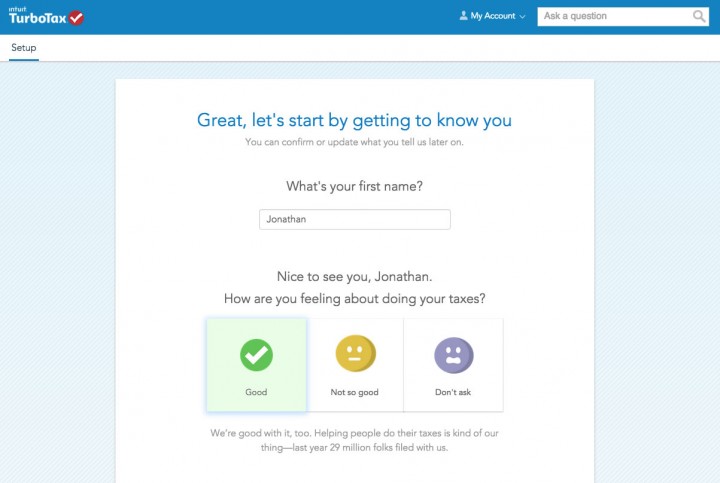
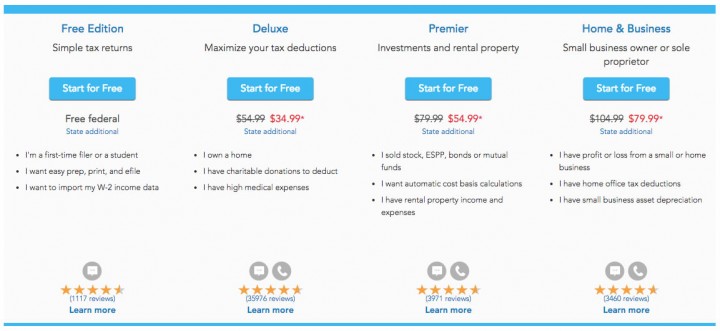
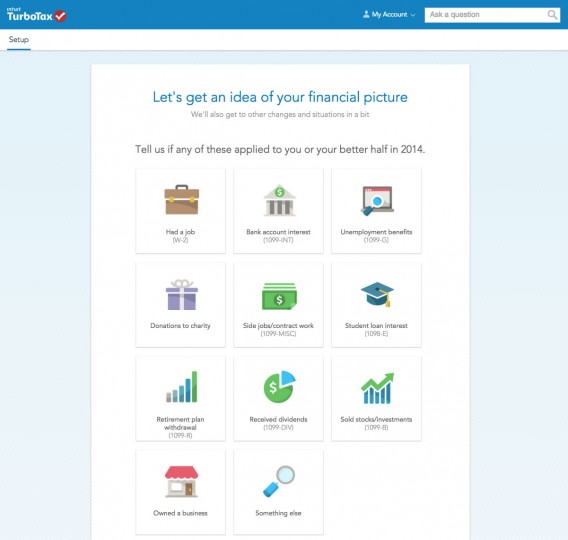
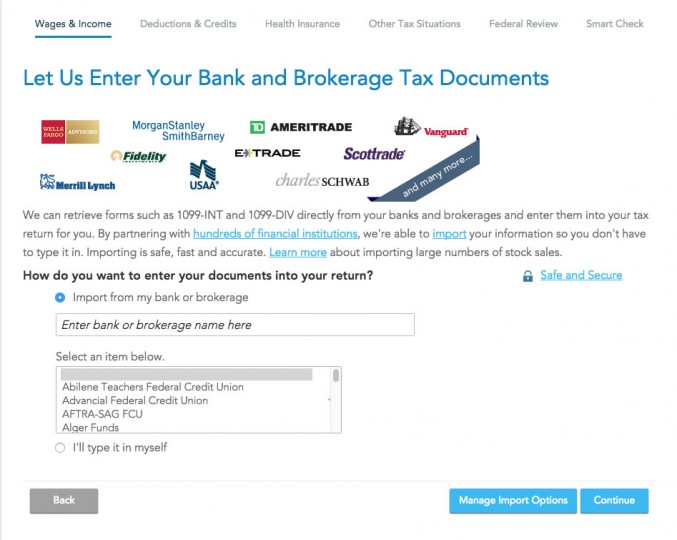
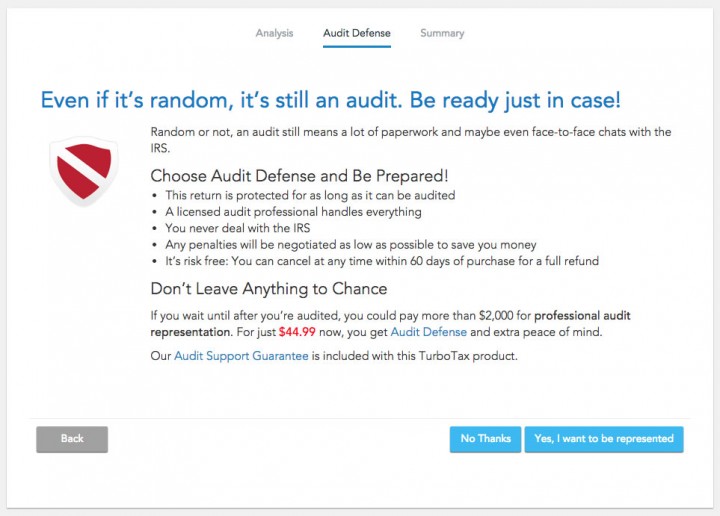
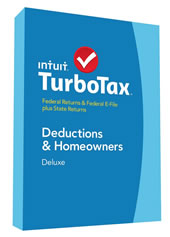
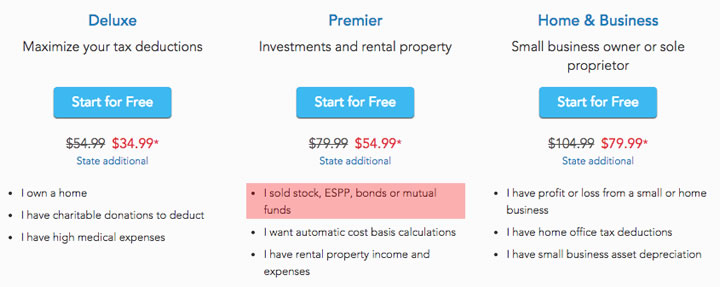
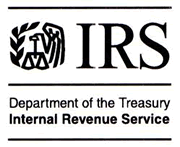 If you have self-employment or other income outside of your W-2 paycheck this year, you may need to send the IRS some money before the usual tax-filing time. Here are the due dates for paying quarterly estimated taxes in 2015; they are supposed to be in four equal installments. This is for federal taxes only, state and local tax due dates may be different.
If you have self-employment or other income outside of your W-2 paycheck this year, you may need to send the IRS some money before the usual tax-filing time. Here are the due dates for paying quarterly estimated taxes in 2015; they are supposed to be in four equal installments. This is for federal taxes only, state and local tax due dates may be different. 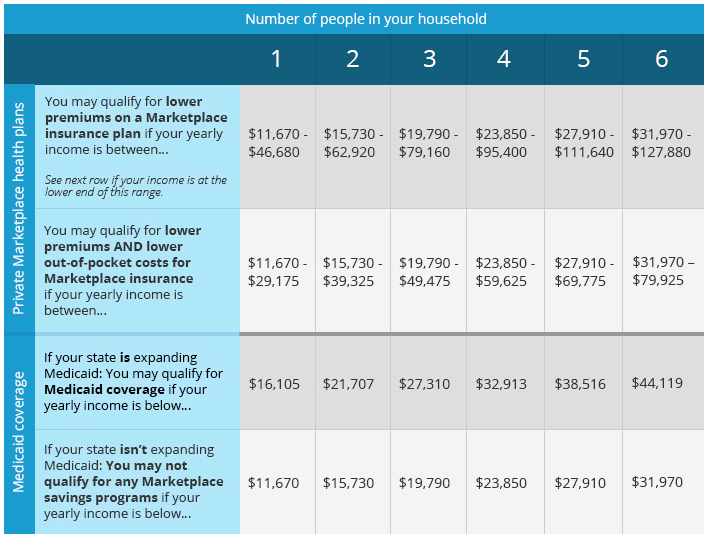
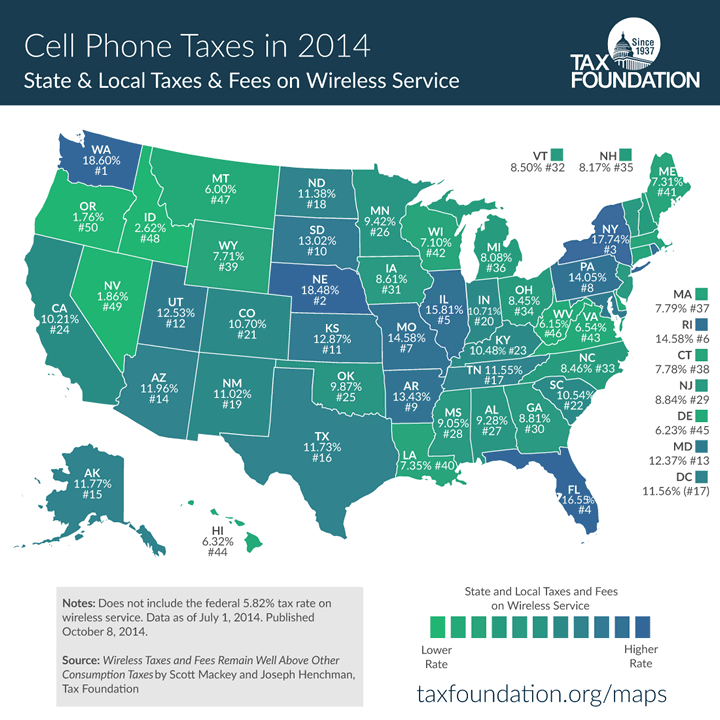
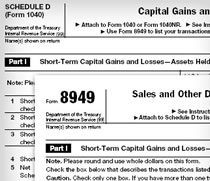 Tax-loss harvesting (TLH) is a technique used to minimize taxes on your taxable investments by “harvesting” capital losses during market declines. With DIY investors, losses are usually only harvested once a year. But with an computer as your portfolio manager, you could attempt to harvest losses continually on a monthly or even daily basis.
Tax-loss harvesting (TLH) is a technique used to minimize taxes on your taxable investments by “harvesting” capital losses during market declines. With DIY investors, losses are usually only harvested once a year. But with an computer as your portfolio manager, you could attempt to harvest losses continually on a monthly or even daily basis.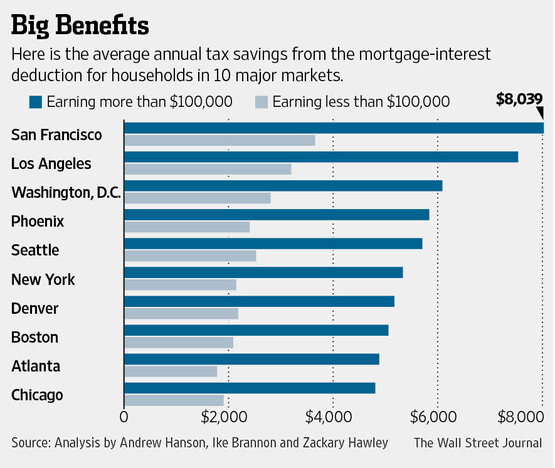
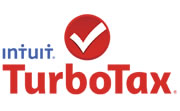
 TaxACT Online
TaxACT Online 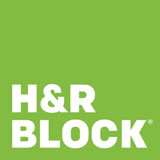 H&R Block at Home Online
H&R Block at Home Online 
 TaxACT Online
TaxACT Online 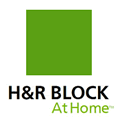 H&R Block at Home Online
H&R Block at Home Online 
 The Best Credit Card Bonus Offers – May 2024
The Best Credit Card Bonus Offers – May 2024 Big List of Free Stocks from Brokerage Apps
Big List of Free Stocks from Brokerage Apps Best Interest Rates on Cash - May 2024
Best Interest Rates on Cash - May 2024 Free Credit Scores x 3 + Free Credit Monitoring
Free Credit Scores x 3 + Free Credit Monitoring Best No Fee 0% APR Balance Transfer Offers
Best No Fee 0% APR Balance Transfer Offers Little-Known Cellular Data Plans That Can Save Big Money
Little-Known Cellular Data Plans That Can Save Big Money How To Haggle Your Cable or Direct TV Bill
How To Haggle Your Cable or Direct TV Bill Big List of Free Consumer Data Reports (Credit, Rent, Work)
Big List of Free Consumer Data Reports (Credit, Rent, Work)